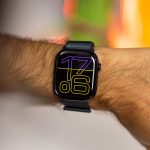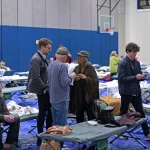- Parts models, who model their hands, feet, teeth, hair, and more, can earn up to $4,000 a day.
- We spoke with a hand model about his hand-care routine, which involves moisturizing 30 times a day and two manicures a week.
- He also talks about the preventative measures he takes to protect his hands, such as avoiding cats and washing dishes.
- While the industry shut down at the start of the pandemic, it is slowly getting back to business with social-distancing and PPE measures in place.
- Visit Business Insider’s homepage for more stories.
Following is a transcript of the video.
Narrator: This is no ordinary hand. This is the hand of a hand model. You don’t know it, but it’s one you’ve seen before, holding cups in Starbucks ads and even acting as Jay-Z’s hand in a Samsung commercial.
Ray: And there’s nothing wrong with Jay-Z’s hands. It’s just particularly that they’re putting the camera over your shoulder. You know, they needed his face. That don’t need his hands for those type of things, so that’s why I got called.
Narrator: Ray has worked as a hand model for 10 years now. To keep his hands camera-ready, Ray moisturizes his hands 30 times a day and gets at least two manicures a week. But what is it that makes Ray’s hands so special? Well, for one, Ray’s complexion is ideal for editing.
Ray: We all have a variety of different complexions. So mine works really well. I guess it’s “ambiguous” in post. They can lighten it, or they can darken it.
Narrator: Ray’s hands are also the perfect size.
Ray: So, what keeps me working a lot is actually that my hands are rather big, but not too big. I can grab a phone, especially today’s phones, and my hand looks natural holding them. They don’t look too small. They don’t look too big. It actually seems like it’s the perfect hand for the phone.
Narrator: But you need more than just the right hands. You need to know how to use them. Hand modeling is harder than it looks.
Ray: Sometimes, you’re asked to do some really funky positions that are totally unnatural, but on the camera it looks natural. It looks perfect, and that’s all that matters.
Narrator: Which means that shoots can be physically taxing, especially when hand models are asked to hold objects up for long periods of time. Shoots can sometimes last up to 12 hours, and models can find themselves in uncomfortable positions under hot lights and intense scrutiny.
Ray: Like, having your hands up like this for a second, no biggie. 10 minutes, though, it starts to wear on you.
Narrator: But Ray has some tricks up his sleeve when it comes to giving his best during a shoot.
Ray: In between takes, I keep my hands up to have the blood circulate down, so I don’t have too many veins in my hands, so that when I bring it in for the shot, it’s a less-veiny hand. Sometimes stop motion, you gotta be really, really still and do these very subtle adjustments. One of my early mess-ups was definitely drinking coffee for a video shoot. That’s not good, ’cause then when it came, really, it was like, “Oh, oh, shaky!” And I had to, like, put all my zen into that moment. So, especially when I’m doing video or anything like that, I try not to have coffee.
Narrator: And when Ray’s not on shoots, he spends a lot of time doing this: moisturizing.
Ray: Whoo, if I had to count how many times I moisturize a day, 30 times a day? I have lotion all over my house, in the places where I know to remind myself, “You should moisturize right here.” Some people talk about lotions and oils. I particularly like oil. Our bodies naturally have oils, so putting on a really great organic oil adds to that natural oil, and it’s just really great for, like, skin rejuvenation, skin hydration, and just all around.
Narrator: Ray also has a go-to manicurist, who makes sure his nails are in tip-top shape before each shoot. Ray: So, this is my manicurist, Erica. Erica: Hi. [laughing]
Ray: We’re here in Washington Heights. She is the one who is behind the amazing nails that I do for many of my shoots. Narrator: In addition to his skin-care regimen, Ray takes a lot of precautions when it comes to protecting his hands. This means putting SPF on before going outdoors and straight-up avoiding cats.
Ray: I can’t be around cats. Their claws are just too sharp. They’ll go, “Nnat!” And you’re like, “Oh, OK, that didn’t get me.” And then you’ll look back, and blood will just be gushing out of you like, “Ahh, I’m a hand model!” And you think the cat will understand. No. Another thing that is a absolute don’t as a hand model is washing dishes, at least without gloves. The soap or detergent can be too rough on the skin.
Narrator: Protecting your hands is extremely important, because any blemish or scratch could result in a lost job. But makeup can sometimes save the day.
Ray: One time I ended up having a cat bite. Everything’s good, but what I ended up doing, I take a little concealer, and I just put it down here, just making sure that your color and skin complexion all blends good.
Narrator: When it comes to getting paid, a weekly salary isn’t guaranteed. Models are essentially freelancers who are paid per job. Day rates can range from $150 to $1,500 or more. Ray says that he’s earned up to $4,000 for a single job before. And, sometimes, jobs come up at the last minute.
Ray: It’s one of those things that literally you can get a call the next day and say, “Hey, you’re booked!” You might have had something going on the day before, especially if you had a job, or, for actors, a callback. If you’re booked the next day, then you gotta go.
Narrator: The amount of work can fluctuate week to week. But since Ray has been working as a hand model for 10 years, he generally books two to three jobs a week now, earning him over $75,000 this past year as a hand model.
Ray: I’m still shocked. Because nobody says or aspires to say, “You know what? I want to be a hand model when I grow up.” [laughs] You know? It’s almost weird, but then you take pride over it. You know, you start seeing your hands all over the place. You see it on billboards. You see it on magazines. You see it on buses and just all over the place. So, yeah, you take pride over it.
Shirley: Hey, I’m Shirley. I’m the producer of this story, and I interviewed Ray in November of 2019, before the pandemic. I thought I would reach back out and see how Ray and the hand-modeling industry are doing during this pandemic.
Ray: When the pandemic started, everything stopped. It froze. There was no nothing. Once, I think, right after phase one into phase two, slowly work started trickling in. People were putting out feelers. “Hey, are you willing to work during this pandemic?” Sometimes it would be like, “Oh, there’s only gonna be three people on set. It’s just gonna be the photographer, you, and a stylist.”
So, yeah, booked my fist hand-modeling job about two weeks ago. We go on set. Everybody’s wearing masks, hand sanitizer’s everywhere. A lot of people have gloves on as well. And everybody’s just trying to be as safe as possible, keep each other 6-feet distance. Something that really transitioned well for me was just how everybody was able to get the work done. It’s also funny, like, at this time too, they’re trying to be extra safe. They’re trying to hire people that live together. The way that my girlfriend and I booked this one job, they were like, “Do y’all live together? OK, cool.” They did the interview and everything like that. And they were like, “Oh, you’re booked!” But they were doing that with everybody else. You would see castings that literally say, “We only want people that live together.” If you have a relative or something like that, like, I had one audition that I had to put my uncle in. It’s like, “All right, even if y’all live together, are y’all safe with being together without your mask on?”
Me and my modeling friends are talking often about, you know, is this going to be… is this gonna be OK? Like, can we truly survive in the state of the way things are right now? And I don’t know. You know, I just really don’t know. I hope so. It seems like there is some type of slow progression, but is that gonna be enough? You know, we still live in New York City. Rent is still due. So, yeah, there’s a lot of questions on, is this going to be sustainable?
EDITOR’S NOTE: This video was originally published in August 2020.
Powered by WPeMatico






